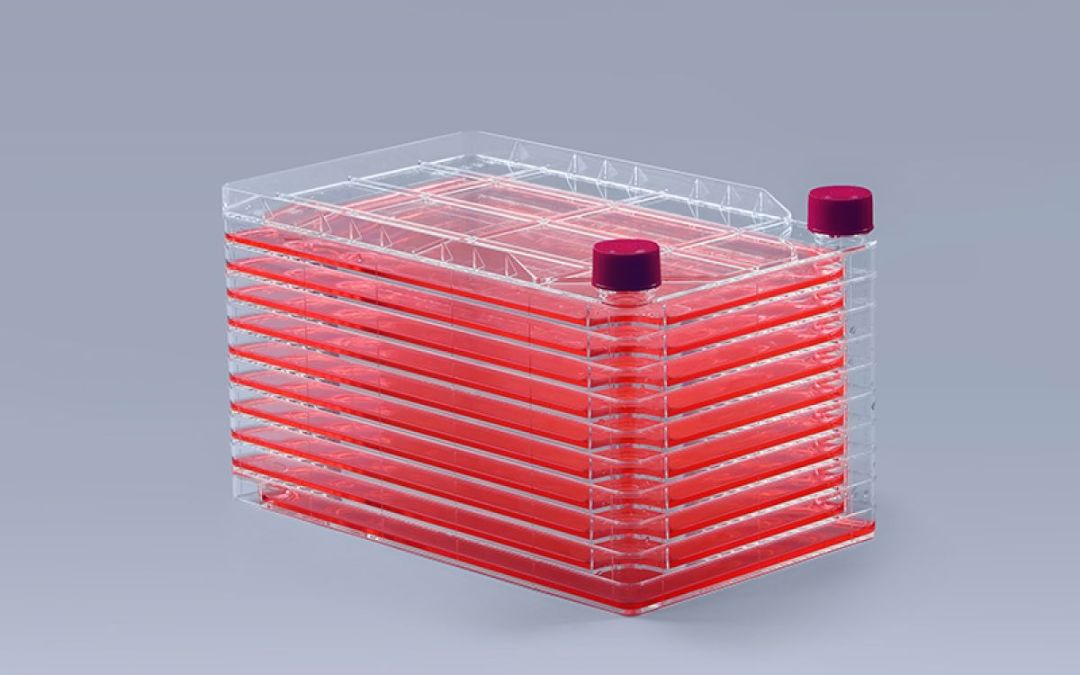In today's rapidly evolving biopharmaceutical landscape, despite the emergence of new technologies like single-use bioreactors, the multilayer cell factory maintains an irreplaceable position in vaccine production. This is especially true during responses to large-scale pandemics (like COVID-19), thanks to its unique and well-established advantages.
In today's rapidly evolving biopharmaceutical landscape, despite the emergence of new technologies like single-use bioreactors, the multilayer cell factory maintains an irreplaceable position in vaccine production. This is especially true during responses to large-scale pandemics (like COVID-19), thanks to its unique and well-established advantages.
Here are the key reasons why it remains the preferred solution:
1. Compact Footprint – Maximizing Capacity in Limited Space
Core Value: By stacking cell growth layers vertically, the multilayer cell factory achieves exponential growth in surface area while its footprint is only slightly larger than a standard tray. This is crucial for companies with limited production space that need to rapidly establish large-scale production lines.
Application Scenario: During a pandemic outbreak, vaccine production lines must be deployed quickly within existing facilities or temporarily repurposed spaces. Compared to traditional roller bottles, a single 10-layer cell factory provides a cell growth surface area equivalent to hundreds of roller bottles, yet requires significantly less space and manual handling area.
2. Supports High-Density Mammalian Cell Growth – Meets Core Vaccine Production Needs
Core Value: Many critical vaccines (such as those for influenza, rabies, and viral vector-based COVID-19 vaccines) require mammalian cells (e.g., Vero, MDCK, HEK293) for virus amplification. The multilayer cell factory provides an ideal, large-scale growth surface for these adherent-dependent cells.
Technical Advantage: Its flat, tissue-culture treated polystyrene surface perfectly simulates the in vivo growth environment for cells, promoting uniform cell attachment, spreading, and proliferation. This results in a high-density cell monolayer, laying a solid foundation for virus inoculation and efficient replication.
3. Closed-System Compatibility – Reduces Contamination Risk, Ensures Product Safety
Core Value: Contamination is a critical threat in biopharmaceutical manufacturing. The cell factory system can be connected via specialized connectors and tubing to sterile transfer bags and bioreactor controllers, creating a relatively closed operating environment.
Comparative Advantage: Compared to fully open roller bottle systems, this closed nature significantly reduces the risk of cells being exposed to environmental microbes (bacteria, fungi, mycoplasma). Simultaneously, it better protects operators from exposure to bioactive viral materials. This is essential for maintaining production continuity and ensuring consistent quality and safety across vaccine batches.
4. Rapid Scale-Up from R&D to Manufacturing – Seamless Transition, Accelerated Time-to-Market
Core Value: This is one of the most competitive core advantages of the multilayer cell factory. Its scale-up method is simple and direct – achieved by increasing the number of layers.
Process Overview:
R&D Stage: Small 1-layer or 2-layer cell factories are used in the laboratory for cell line screening, virus strain validation, and process development.
Process Scale-Up: Once the process is defined, it can transition almost seamlessly to 10-layer, 40-layer, or even larger production-scale cell factories. Because the cell growth microenvironment (medium depth, gas exchange, surface material) is identical in each layer, the micro-environment for cell growth remains largely consistent. This greatly simplifies the complex engineering and biological challenges typically faced during process scale-up.
Market Impact: This "order-of-magnitude" scaling capability enables vaccine manufacturers to translate laboratory research into commercial production of tens of millions of doses at the fastest possible speed. This provides a critical advantage in securing the "golden window" during public health emergencies.
Summary
In conclusion, the multilayer cell factory system combines spatial efficiency, proven cell culture support, controlled contamination risk, and unparalleled scaling simplicity into one robust, reliable, and cost-effective vaccine production platform.
While single-use bioreactors excel in suspension cell culture and process control, for vaccine production processes that necessarily rely on adherent cell culture, the multilayer cell factory—backed by decades of successful application history and the comprehensive advantages outlined above—remains the preferred and foundational technology for numerous vaccine manufacturers worldwide in large-scale production.




